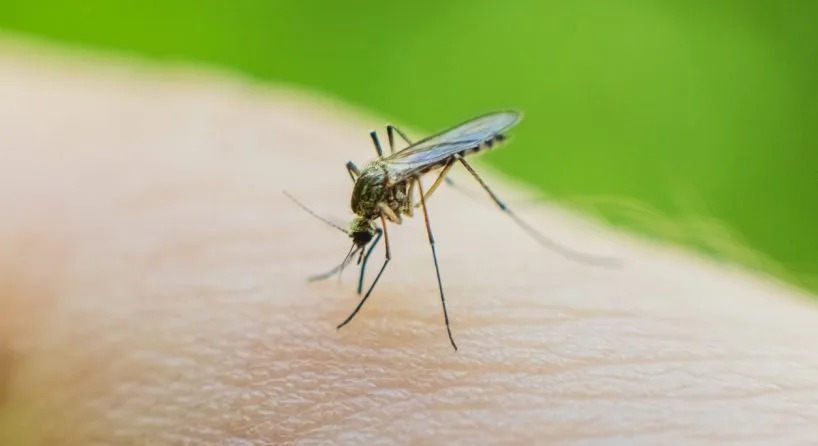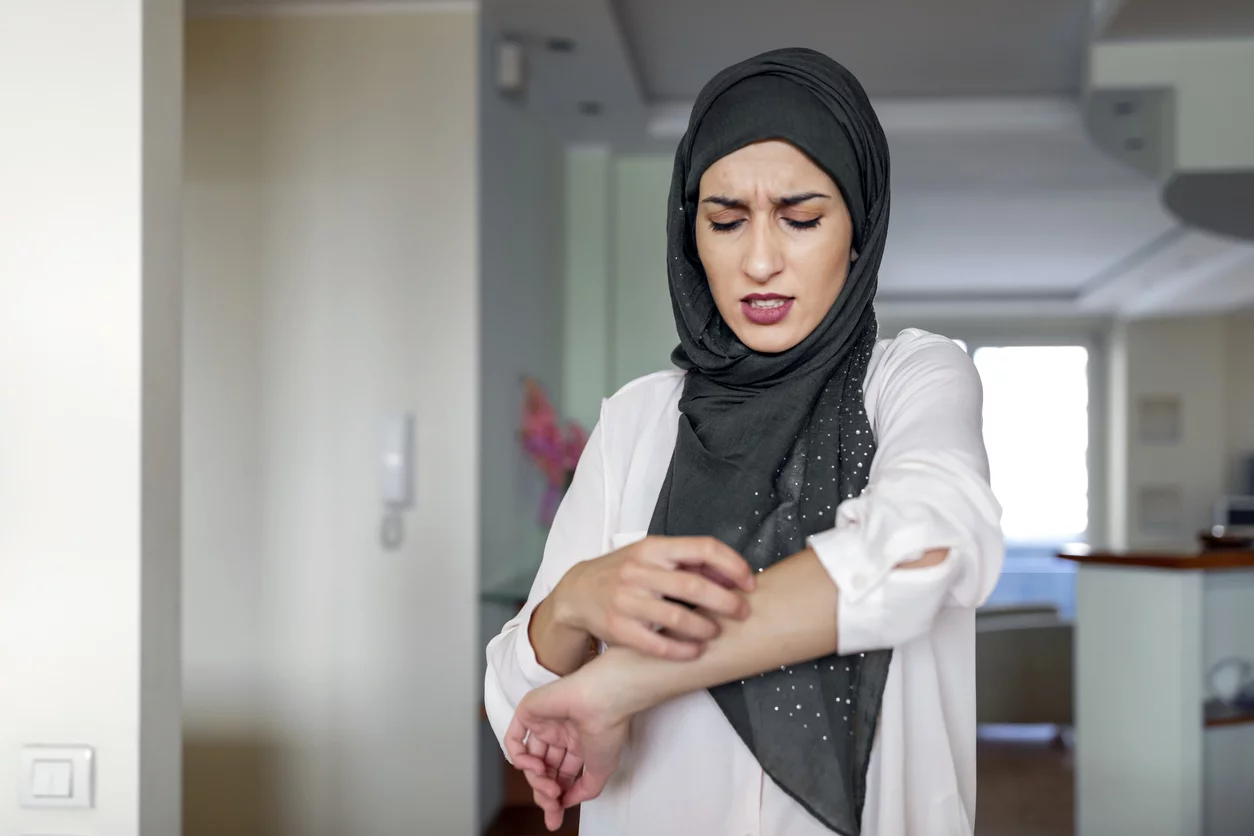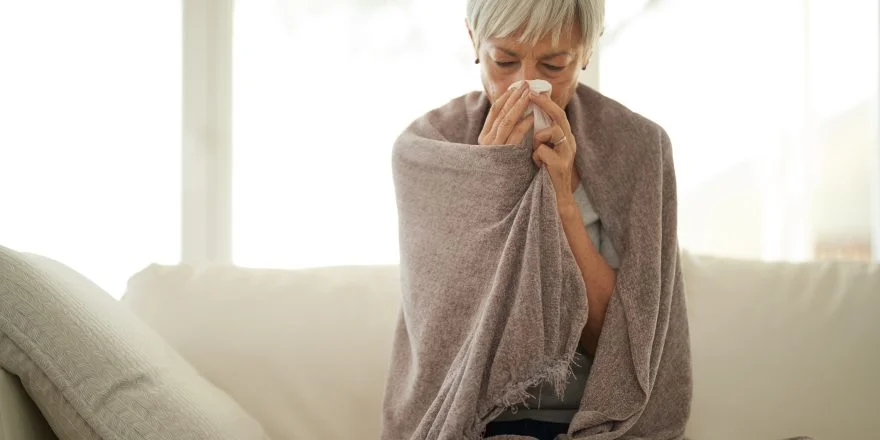
How Good is Your Knowledge About: Bites and Stings?
Australia is home to an amazing array of creatures large and small. Some of these can inflict a painful bite or sting, which, in certain cases, can be serious or even life-threatening.
Take this quiz to test your knowledge on some of the more common dangers (in addition to the obvious crocodiles and sharks!) that are around at home and when you’re on holiday.
Please remember, if a bite or sting victim is allergic or has a serious reaction, call triple zero (000) for an ambulance. If the person stops breathing, perform CPR until medical help arrives.
1. In Australia, what creatures are responsible for the greatest number of hospitalisations due to venomous bites or stings?
- Snakes
- Spiders
- Ants
- Bees
Correct Answer:
4) When we think of poisonous creatures, spiders and snakes often spring to mind, but according to a report by the Australian Institute of Health and Welfare (AIHW)1, bee stings are the biggest culprit. Bees were responsible for over a quarter of the 3,500 hospitalisations due to contact with a venomous animal or plant in 2017–18, mainly due to allergic reactions.
2. What should you do if you get stung by a bee?
- Remove the stinger by squeezing it out with your fingers
- Remove the stinger by scraping it out with a flat object
- Leave the stinger in place and let it fall out naturally
Correct Answer:
2) Scrape the stinger out with a flat object like a credit card or your fingernail.2,3 Wasps don’t leave a stinger in the skin, but the following additional first aid steps apply to both bees and wasps:
Wash the sting site with soap and water, then apply ice wrapped in a thin cloth, or a cold compress for 20 minutes per hour as needed. Taking an antihistamine and/or applying a cortisone cream may help reduce swelling and itching, and an over-the-counter (OTC) pain reliever may help if required.2,3 But seek medical advice before taking two or more medications together. Your local IPA Pharmacist can advise on the best solution for you.
If pain from the sting persists, or the area of redness around the sting site expands, see a doctor, and get immediate medical help if anyone who has been stung is allergic.
3. What type of creature is considered the most dangerous in Australia?
- A snake
- A spider
- A jellyfish
- An insect
Correct Answer:
3) Australian museum experts rated the Australian box jellyfish (Chironex fleckeri) our most dangerous creature, based on the threat they pose combined with the likelihood of encountering one.4 These transparent jellyfish, found in the tropical waters of our northern coastline, have three-metre-long tentacles housing tiny capsules with the most rapidly acting venom known to science. It can kill a person in under five minutes!5
So, if you plan on swimming at one of Australia’s northern beaches, never enter the water when a beach is closed and swim within stinger nets if possible. It would also be wise to wear clothing or a stinger suit to cover as much exposed skin as you can.5
Most of the over 1,000 species of jellyfish in our coastal waters are harmless, but Australia’s government health advice website, HealthDirect,6 has comprehensive information on how to deal with jellyfish stings in tropical and non-tropical locations.
4. If someone is bitten by a venomous snake, what should you do first?
- Try to suck out the venom
- Apply a tourniquet
- Keep the person still and apply a pressure immobilisation bandage
Correct Answer:
3) If someone is bitten by a snake, never try to suck out the venom, apply a tourniquet, or cut the bite site. And don’t wash or wipe the bite because traces of venom on skin and clothing can help identify the species and the required antivenom.8
Contrary to popular opinion, venom is rarely injected with a snake bite.7 Nevertheless, always call triple zero (000) for an ambulance immediately, even if the person seems well. Keep them as still and calm as possible and apply a pressure immobilisation bandage to the whole limb if relevant, or constant, firm pressure on the site if not on a limb, to slow the spread of venom. Stay with the patient until medical help arrives.8
HealthDirect,8 gives more comprehensive information on what to do in the case of a snake bite, including how to apply a pressure immobilisation bandage. With our country home to 21 of the 25 most toxic snakes in the world, that’s something every Aussie should know, just in case!
5. After a tick bite, what’s the safest way to remove the tick?
- Freeze the tick and let it fall off on its own
- Burn the tick off with a match
- Use tweezers to pull the tick out
Correct Answer:
1) Spray the tick with an ether-containing spray to freeze and kill it as soon as possible and allow it to drop off on its own.9 If you attempt to pull it off, it’s likely to inject more of its allergen-containing saliva, and burning it off is likely to burn the patient as well. Your local IPA Pharmacy can help you with an ether-containing spray.
Seek medical attention if the person shows signs of an allergic reaction (swollen throat, difficulty breathing, or collapsing), or if you can’t kill the tick properly, if part of it is still left in the skin, or if the bite area becomes red or swollen.9
6. Do Australian bull ants bite or sting?
- They bite
- They sting
- They can do both
Correct Answer:
3) While you want to avoid a painful bite from one of these ferocious little critter’s powerful mandibles, it’s the sting you should be most cautious of. Located near the abdomen, the stinger can inject a powerful venom that’s been known to cause a severe allergic reaction in people.10
If someone’s bitten or stung by a bull ant, wash the site with soap and water and keep it clean. Applying a cold compress or ice wrapped in a thin cloth can help relieve pain and reduce swelling. An OTC pain relief medicine, such as paracetamol or ibuprofen, may also help if needed, and an oral antihistamine or cortisone cream can help relieve itching.3 Your local IPA Pharmacist will advise you on the best products for your situation.
See your doctor or IPA Pharmacist if the pain persists, or if the area of redness around the sting site continues to get bigger.
7. Which statement about Australian spider bites is true?
- Most spider bites are potentially deadly to humans
- A White-tailed Spider bite will lead to necrosis and possible limb amputation
- Funnel-web spiders are all deadly
- All of the above
- None of the above
Correct Answer:
4) Of the 3,000 spider species in Australia only the Sydney Funnel-web (no other funnel-web species) and the Redback have been known to cause human fatalities. And thanks to the development of antivenoms, no deaths have occurred from a Sydney Funnel-web bite since 1981, and none confirmed from a Redback bite since 1956.11
As for White-tailed Spider bites, 130 cases were investigated by Australian scientists with findings showing reactions varying from minor effects to painful red lesions, but no cases of necrotic (tissue killing) lesions.11
If someone is unlucky enough to be bitten by a Funnel-web, treat it as for a venomous snake bite (see Question 4 above). For a Redback bite, wash the bite area with soap and water, use a cold pack for 15 minutes to relieve pain, and see your doctor if symptoms (mainly pain, redness, and sweating at the bite site) are bad. If the pain is extreme, go to your local hospital emergency department.12
For all other spider bites, apply a cold compress, or ice pack wrapped in a clean cloth, to the bite site for 15 minutes as needed.12
Your local IPA Pharmacist can advise you about using an antihistamine to help reduce itching, a hydrocortisone cream to help reduce redness and inflammation, or an anaesthetic cream or other OTC pain medication, if needed.
8. For most bites or stings what should you do?
- Wash the area with soap and water
- Apply ice or cool running water for 15 – 20 minutes
- Both the above
Correct Answer:
3) Most bites and stings are not life-threatening, but they can cause pain, redness, and/or itching. Generally, washing the area with soap, applying ice wrapped in a thin cloth, or cool running water, then keeping the area clean and dry, should help to ease discomfort.3
Your local IPA Pharmacist will advise you on the best antihistamine or corticosteroid cream to further reduce swelling and itching, and pain relief, if needed.
How did you score?
If you got most of these questions right, congratulations! And if you missed a few, don’t worry—we hope you’ve learned something new.
And remember, it’s wise to be prepared with the right first aid products from your local IPA pharmacy. Stay safe!
Who are IPA Pharmacists?
IPA Pharmacists are part of Australia’s largest network of independent pharmacies. They offer personalised healthcare and expertise in medicines. They specialise in various health aspects, such as sleep and diabetes, and are dedicated to supporting your wellness journey. With a network of over 1,100 pharmacies and growing, an IPA pharmacy near you is ready to provide exceptional advice, services, and products to enhance your health outcomes.
References:
- “Bees responsible for most venomous bite and sting hospitalisations” – Australian Institute of Health and Welfare
- “Bee sting” – Mayo Clinic
- “Insect bites and stings” – HealthDirect.gov.au
- ”Australia’s dangerous animals: the top 30” – Australian Geographic
- “Meet Queensland’s most dangerous animals” – Queensland Department of Environment, Science and Innovation
- “Jellyfish stings” – HealthDirect.gov.au
- “Are Australian snakes the deadliest in the world?” – University of Melbourne School of Biomedical Sciences
- “Snake bites” – HealthDirect.gov.au
- “Tickbites“ – HealthDirect.gov.au
- “Bull ant” – Australian Geographic
- “Top spider myths” – Museums Victoria
- “Spider bites” – HealthDirect,gov.au
Important Information
The information provided on this website is shared in good faith for general informational purposes only. It does not constitute an endorsement or recommendation of any specific treatment, product, or service, nor is it a substitute for professional advice. Always consult with qualified professionals regarding matters related to your health, wellbeing, or other personal concerns. While every effort is made to ensure the accuracy and reliability of the information, we cannot accept responsibility for any injury, loss, damage, or consequences resulting from its use.



